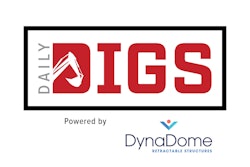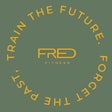
Cravings can interfere with our daily lives and derail our focus. Although we may crave chips or chocolate, the most serious cravings tend to involve substance use disorders. In these cases, repeated use of a substance leads to significant distress and impairment.
Substance use disorders are the most common mental health issues in the United States, aside from anxiety and depression. Almost 30 percent of adults will face alcohol or tobacco addiction in their lives, and half of all those who seek treatment will relapse within one year.
In fact, drinking alcohol and smoking are the most common substance use habits in the United States. Together with opioid and stimulant use, more than one in 10 American adults has some level of daily impairment due to addiction.
Of course, serious cases of substance use disorder require professional interventions. In mild and moderate cases, research is accumulating to show the value of exercise for managing mood and minimizing cravings.
Substances hijack reward circuitry
Many of our vices lure us into action even when we know it’s not in our best interest. The drive to pour another beer or light another cigarette, or even to go for a second helping, all reflects brain activity in regions that motivate physical action. And regardless of whether it’s dessert or cigarettes, many of the same brain circuits are activated.
Exercise shifts brain activity
We can robustly change activity in these brain circuits with exercise. A workout may have a “resetting” effect that changes our sensitivity to cravings, because we are better able to resist temptations after a workout than before it. Electrical activity in the brain changes within minutes of starting a workout, and this helps us experience stress relief and shift our attention away from nagging urges.
Brain imaging studies show that exercise helps us in ways that strengthen goal-related actions, activating brain circuits that help us stay on task. That same workout also reduces our impulsivity so we can better resist temptations.
Problematic drinking
Since 2020, most U.S. adults increased their alcohol intake, and some continue to report more binge episodes and solitary drinking than before the pandemic.
Mild to moderate levels of alcohol use is common, and many people show peak alcohol consumption around the holidays. Research studies related to the effects of exercise have recruited adults with problematic alcohol use. In addition to weakening their desires for alcohol, exercise sessions reduced feelings of tension and improved mood in these populations.
The available evidence indicates that joining a gym may help members regain a sense of control and helps them cut down on alcohol intake.
Nicotine addiction
Studies on brain activity confirm that exercise quickly dampens cigarette cravings in smokers who were nicotine-deprived for 15 hours. By reducing the severity of nicotine withdrawal, smokers are able to lengthen the amount of time between successive cigarettes with less discomfort.
Although a single exercise bout works for temporary relief, regular exercise is best to quell cravings over time. And exercise can also help smokers manage the weight gain that is common upon nicotine cessation.
Spreading the word
Fitness professionals and gyms can help to communicate the mental health benefits of exercise. A healthy mindset is crucial for quality of life, and managing temptations isn’t easy. Virtually everyone in the gym is unified by the goal of self-improvement. This aim can be fertile ground for growing camaraderie among gym-goers and reducing attrition.
The stigma of mental health issues leads many to feel shame and isolation. The tide is shifting, but we must continue to normalize seeking professional help for mental health challenges.
Exercise alone cannot cure substance use disorder but is an effective tool to reduce the strength of intrusive thoughts that are common to addiction.
Workouts address many types of cravings. Studies show that gym visits benefit those who are aiming for more sobriety in their lives in addition to those who wanted to cut down on food-related cravings, such as sweets and fast-food items.
Short workouts are also beneficial. Research confirms that even short bouts of exercise lasting just 10 minutes can be effective for reducing the strength of cravings.
Gym visits change the brain in ways that manage impulsiveness. On average, the number of minutes we spend exercising each week correlates to our ability to manage impulses. At the same time, we can expand the benefits of gym visits as a tool for feeling better and to ease cravings.





































